Transportation Research Update
 Understanding the Transportation Experience of Underserved Communities
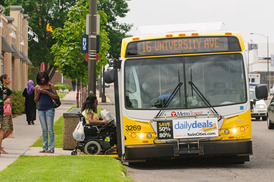
EQUITY - The costs and benefits of the transportation system have not been equitably distributed across Minnesota’s many distinct communities. Implicit biases and limited perspectives of community needs result in transportation actions favoring some groups over others. To advance a more equitable transportation network, MnDOT explored the perspectives and experiences of 10 traditionally marginalized communities and gained an understanding of both common and unique transportation needs of different groups.
Researchers conducted one-on-one interviews with African Americans, people with disabilities, immigrants, the White Earth Nation and members of other communities. Some participants used a smartphone app for a week to record travel experiences and perceptions. All communities reported relying on transportation for employment, healthcare, shopping for necessities, family and community connections, and religious or spiritual needs. Participants frequently noted car-related challenges and inadequate public transportation. Recommendations and strategies for meeting the unique transportation barriers and needs of communities are provided.
|
Measuring Pavement Density for Sustainable Centerline Joints
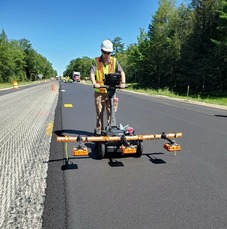
CONSTRUCTION - Local transportation agencies generally pave one lane of road at a time to keep traffic moving. Phased paving, however, creates joints in between the lanes that can crack and deteriorate. A recent research project produced tools and recommendations that may provide solutions to avoid significant maintenance expenditures while repairing centerline joints.
Researchers surveyed completed research and other state and local transportation agencies to identify construction practices that result in long-lasting joints. Recommendations focus on the geometry of joints, asphalt rolling methods and techniques to avoid joints altogether. Next, they determined that pavement that lacks sufficient density leads to faster deterioration, and they explored new technologies to measure density in real time during the pavement process. Paving projects in Minnesota and Michigan provided data that demonstrated the value of the density profiling system. With this tool, quick and easy density measurements can support better construction quality or repair processes to ensure stronger, longer-lasting pavement.
|
Reevaluating City Speed Limits with Public Safety in Mind
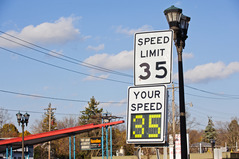
SAFETY - Minnesota city officials considering changes to their speed limits now have a roadmap to guide their decision process. In 2019, the Minnesota Legislature passed an update to its original speed limit statute, granting cities within the state the authority to revise statutory speed limits on their roadways without conducting tests that were formerly required. To equip these officials with information needed to change speed limits, researchers developed a series of guidelines for decision-making and implementation of speed limit changes.
Investigators collected speed limit research, traffic data and collision statistics within Minnesota and across North America to discover not only how municipalities set effective speed limits, but also whether speed limit reductions change the behavior of drivers. The resulting guidelines emphasize gathering relevant data and input from different community partners, as well as clear communication to drivers and a follow-up assessment on drivers’ responses to new speed limits. As alternatives to speed limit modification, the researchers outline other strategies with proven results in lowering pedestrian and bicycle collisions.
|
Drainage 101: Understanding and Managing Drainage Issues
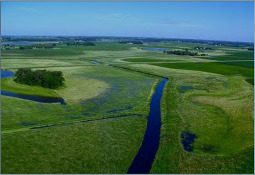
EMVIRONMENT - Stormwater management has become a significantly more time-consuming issue due to increased levels of precipitation in recent years. City and county drainage is complicated by legal requirements and statutes, which are challenging for both local agency engineers and the public. Agencies sought an educational resource to help city and county engineers efficiently navigate these complex, often public-facing issues.
The result of this project is a concise guide for city and county engineers, property owners and local officials. The resource includes in-depth reference materials, templates, fact sheets, a cost–benefit analysis and information related to GIS usage.
|
Transportation Equity Training for MnDOT Employees
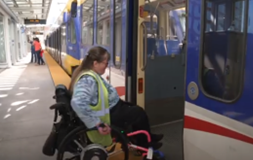
Some communities have experienced disparate impacts from transportation network decisions and implementation. Highway building in the 1960s cut through or destroyed primarily Black urban communities, and policies, design and other agency functions continue to create hardships for certain segments of Minnesota’s population. Varying assumptions and perspectives, and explicit or implicit biases among MnDOT employees can unduly burden people based on their race, gender, disability, age or other characteristics. New training resources can help MnDOT advance equity by addressing existing and reducing future disparate impacts from management of the transportation system.
With the goals of creating a shared understanding and building employee capacity, a project team representing multiple perspectives reviewed previous research, case studies and narratives to illustrate and explain equity issues. The team then developed a two-day training program that includes historic information about transportation equity and demonstrations of how transportation decisions can unequally impact specific demographics by resulting in, for example, changes in travel choices or behaviors, or loss of access, property and communities. Additional training products were developed along with a summary video that highlights the issues and concepts of transportation equity. Among the lessons learned was the need to diligently consider equity issues in all Minnesota communities, from urbanized areas to smaller rural communities.
|
Speed Limit Change (55 mph to 60 mph) Safety Re-Evaluation
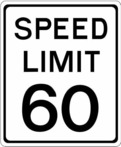
Legislation passed in 2014 mandated MnDOT to evaluate a speed limit increase from 55 mph to 60 mph on the two-lane state highway system. Following these investigations, the speed limit was increased to 60 mph on 5,240 miles of the two-lane state highway system, in addition to the 1,550 miles where the change had already been implemented. A total of 81 percent of the two-lane, two-way state highways had a posted speed limit of 60 mph.
|
In a recently completed study, researchers re-evaluated the safety impacts of increasing the speed limit on highway road segments in Minnesota. An empirical Bayes before and after analysis was used to estimate crash modification factors for both segments and intersections.
- The segment analysis showed an 8 percent reduction in total crashes that was statistically significant, alongside a significant 15 percent increase in combined fatal, serious injury, and minor injury crashes.
- The intersection analysis was split into two groups (all traffic control types and thru-stop control only). Analysis of all intersections within these two groups showed, on average, between a 10% and 20% statistically significant reduction in total and injury crashes.
Overall, data showed that that the speed limit increase from 55 mph to 60 mph resulted in fewer overall crashes but potentially more injury crashes.
Now Hiring: Communications Student Worker
MnDOT's Office of Research & Innovation is looking for a student worker to provide communications support for the agency’s Research Program, Minnesota Local Road Research Board, MnDOT Library, and MnDOT Innovation Program. Gain experience educating transportation practitioners and the public on advances in the field and sharing the value of research. Tasks include writing, graphic design, and social media support.
Applications are being accepted from current college students majoring in Communications, Marketing, Journalism, Videography, Graphic Design or related field. Use the button below to learn more about the position and apply.

|